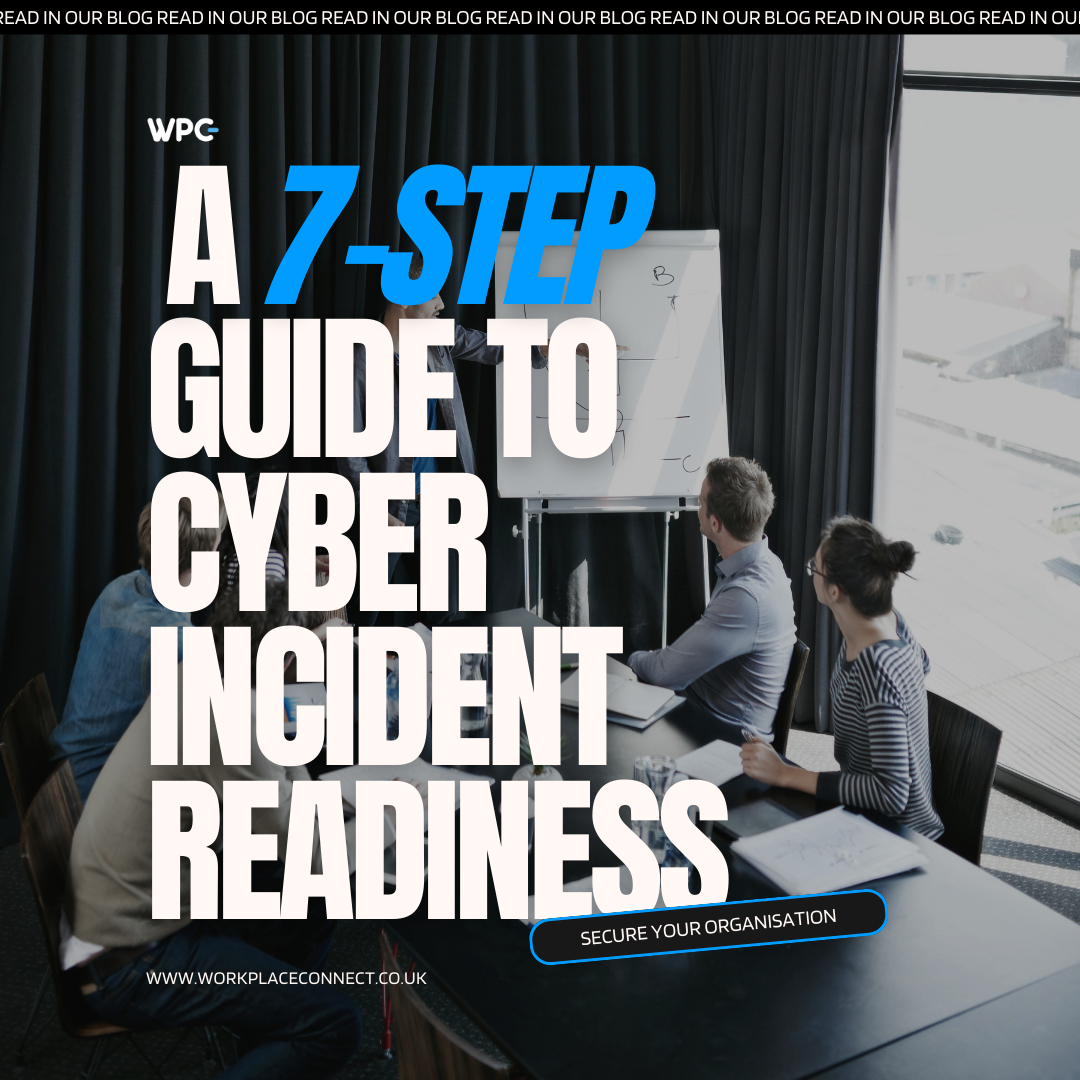In today’s digital age, the threat of cyber incidents looms over businesses of all sizes and across all industries. Whether it’s a data breach, a malware attack, or a phishing scam, the consequences of a cyber incident can be devastating.
To safeguard your organisation and minimize potential damage, it’s crucial to have a comprehensive cyber incident preparedness plan in place. Here are seven essential steps to help you prepare your entire business for a cyber incident.
How Can My Organisation Prepare?
1. Make sure you have a well-defined and consistent cybersecurity response strategy
Organisations should make certain that their cybersecurity governance and response strategy is clearly established aligned with best practices, and includes capabilities to enable effective security decision-making in order to identify, assess, and mitigate cybersecurity threats. These abilities ought to incorporate channels for efficient and clear reporting of cyber risk measurements and metrics to appropriate executives and business stakeholders, which could have operational, financial, or reputational consequences.
2. Examine and improve your cybersecurity risk management programme and procedures
A clearly established cyber security risk management programme is a core pillar to an encompassing enterprise-wide risk programme, allowing an organisation to swiftly evaluate when incidents may have a serious impact that necessitates disclosure.
A structured cyber risk programme helps a company to make decisions by weighing business effects against risk concerns such as asset loss, disruption to business, and the ability to resume operations if vital systems are compromised. Understanding their threat profile, high-value assets, reliance on third-party partners, and their capacity to identify and react to threats that could lead to a breach are key activities that companies ought to take into account in their cyber risk planning.
3. Determine your “Crown Jewels”
Identifying and evaluating an organisation’s most valuable assets, which are appealing targets for hostile actors, is critical to measuring material effect. A comprehensive understanding of the resources and data that are most important to the company and its customers — the “Crown Jewels” — will aid in both informing materiality assessments and bringing accuracy and prioritizing to areas of utmost criticality. We frequently propose enhancing asset information with a grasp of not only business relevance, but also the asset’s value to an attacker, event history, and the downstream and upstream system dependencies when selecting your Crown Jewels.
4. Update your strategies, playbooks, and documentation
Operational capability is a good place to start when supporting an organisation’s cyber protection and risk management programme. Recognising and aligning the data and systems that are most critical to your company (i.e., Crown Jewels) to incident response plans, playbooks, and management documentation is the best way for organisations to position themselves for a better incident outcome and compliance. Compliance will necessitate preparation on numerous fronts.
5. Assess your company’s readiness to operate for cybersecurity incidents
Companies ought to evaluate their response plans in advance of an incident to find and fix any gaps that may impede their capacity to comply with the regulations (for example, having the capacity to determine significance, report within four days of the event, or file for a reporting exemption). Tabletop exercises of many forms can be used to assess the breadth and depth of an organisation’s processes and capabilities, including executive, technical, functioning, and board-level exercises. Companies should incorporate participation from multiple divisions in their exercises to ensure adequate representation and surface, as well as to reduce the risk of process, communication, and responsibility collisions among teams during an incident.
6. Create a map of your stakeholders and methods of communication
A thorough communications plan that governs the process of developing material and sending updates to key stakeholders is an essential component of a successful company-wide cybersecurity incident response plan. Companies must prepare to speak about an incident both internally and internationally. In the absence of such a plan, there is a danger of inconsistent messages and potential compliance difficulties.
7. Identify your ecosystem of responding partners
When a cyber event happens, an ecosystem of outside collaborators aids in many elements of the company’s response. The responding partners differ depending on the company and the scope of the incident, but they typically include:
- Legal
- Insurance
- Forensics
- Communications
- Extortion/Ransomware Negotiators
While not directly participating with the emergency working group, it is excellent practise to identify and prepare information acquisition and credit monitoring suppliers to assist with various stages of the investigation and action.
Prior to an incident, it is critical to identify these partnerships and plan how to collaborate throughout the event. If possible, include partners who will be directly engaged in the response in preparation activities such as tabletop exercises. Businesses should also ensure that incident response plans and playbooks have up-to-date contact information and processes.
Is Your Organisation Ready to Respond?
When a cyber event occurs, organisations must be prepared to respond fast. This is a key moment to develop your cyber response methods before you are confronted with an actual occurrence. Companies cannot successfully improve cyber crisis response processes while an issue is ongoing. By taking these actions and investing proactively in cybersecurity preparedness, a business can reduce risk, meet regulatory requirements, and foster trust and resilience.
Contact us today and let’s secure your business – together!







